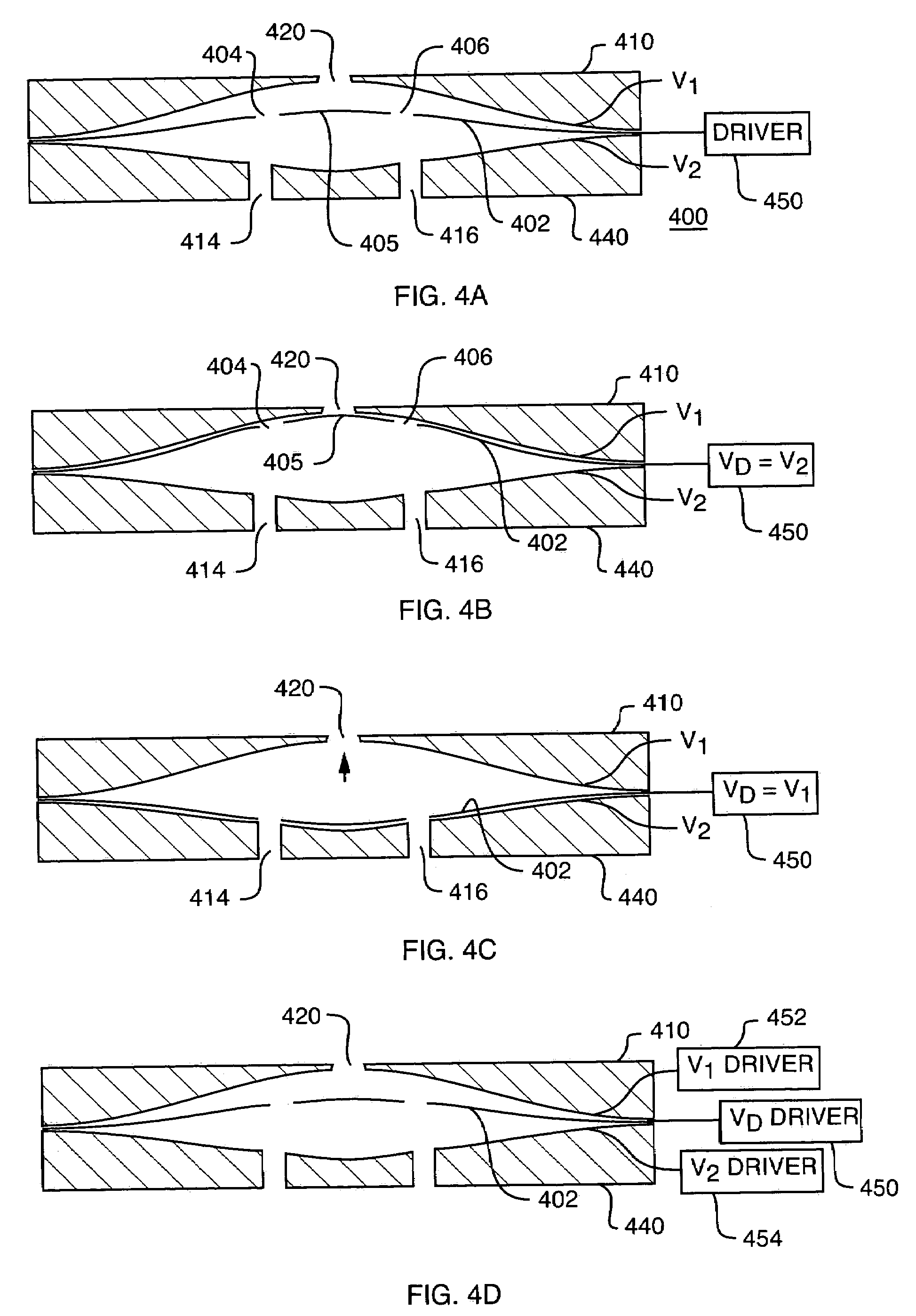Electrostatically actuated shutter and array for use in a direct oxidation fuel cell
a technology of direct oxidation and shutters, applied in the field of fuel cell systems, can solve the problems of difficult control of the rate at which fuel is delivered using face feeding fuel delivery systems, high power applications, and inability to meet the requirements of high-power applications, and achieve the effect of low-power solutions
- Summary
- Abstract
- Description
- Claims
- Application Information
AI Technical Summary
Benefits of technology
Problems solved by technology
Method used
Image
Examples
Embodiment Construction
[0045]The illustrative embodiment of the invention is described with reference to a direct oxidation fuel cell, which uses a carbonaceous fuel, such as a highly concentrated methanol vapor as the fuel powering the fuel cell. However, it should be understood that the device of the present invention may be used with other fuel substances such as carbonaceous fuel substantially comprised of alcohol, such as methanol and ethanol, alcohol precursors, dymethyloxylmethane, methylformate or combinations thereof and aqueous solutions thereof, and other carbonaceous substances amenable to use in direct oxidation fuel cells and fuel cell systems. The invention is applicable to face fed systems that may have a vapor feed, or liquid fuel feed and may have passive water management, or active recirculation. The invention is also applicable to other types of fuel cell systems. In addition, the invention is described with reference to use with a planar fuel cell array, but could also be used with an...
PUM
| Property | Measurement | Unit |
|---|---|---|
| voltage | aaaaa | aaaaa |
| applied voltage | aaaaa | aaaaa |
| dielectric | aaaaa | aaaaa |
Abstract
Description
Claims
Application Information
 Login to View More
Login to View More - R&D
- Intellectual Property
- Life Sciences
- Materials
- Tech Scout
- Unparalleled Data Quality
- Higher Quality Content
- 60% Fewer Hallucinations
Browse by: Latest US Patents, China's latest patents, Technical Efficacy Thesaurus, Application Domain, Technology Topic, Popular Technical Reports.
© 2025 PatSnap. All rights reserved.Legal|Privacy policy|Modern Slavery Act Transparency Statement|Sitemap|About US| Contact US: help@patsnap.com



